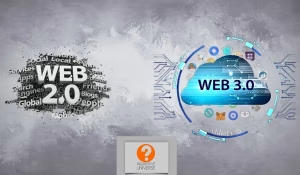If you haven’t heard, Web 3.0 is the new goldmine and our smartphones have become the primary means by which we can access it. When Web 3.0 goes mainstream, it is going to transform the smartphone from a mere communications and multimedia device into a gateway that grants us access to a modern Web 3.0 internet. In this article, we’ll discuss the role of smartphones and DApps in the age of Web 3.0.
Smartphones
Smartphones have become very ubiquitous today, so much so that everyone has got one. There’s a very good chance that you’re currently reading this article on a smartphone. They have undergone several changes over the years and have transitioned from being bulky and uni-functional to being sleek, smart and multifunctional.
Smartphones have become more advanced over times, incorporating more functions and benefitting from better technology. Now they cannot only just make calls, but are basically pocket computers.
Today, smartphones have become very important. They are our personal assistants, manage schedules, and connect us via social media and apps. They’re entertainment hubs, streaming content, playing games and offering virtual experiences. They’re also digital wallets, enabling easy payments. They will take advantage of Web 3.0 by granting us access to what are known as DApps.
As Web 3.0 becomes more mainstream, we expect that smartphones will get even better to take advantage of its features. A lot of manufacturers are already incorporating AI and Machine Learning into modern smartphones. This will make them more secure and help us make better use of Web 3.0 and IoT.
You may also be interested in:
Decentralized Applications (DApps)
In Web 3.0 we’ll be introduced to Decentralized Applications, or DApps. Simply put, DApps are software applications that run on the blockchain or a peer to peer computer network instead of a single server controlled by an entity. DApps are spread instead across the network to be collectively controlled by its users. Smartphones and DApps in the age of Web 3.0 will be crucial in how we will be able to access software services online.
DApps will change the way we interact with the Internet because they run on the Blockchain or P2P network. This ensures that they are resistant to censorship, outages, and control by any single party.
DApps would operate in an open system where developers build software applications for the community that are owned by all and controlled by none. As a result, the users will engage with services on their terms, participate in the control of such apps, and influence the evolution of the platform.
Moreover, DApps carry some serious implications. They point to a future where smartphones gives us access to decentralized marketplaces, social networks, and financial services. In this future, the blockchain’s unchangeable ledger will safeguard our online interactions, while we retain control over our data, and the digital services answers to us, the users.
Examples of DApps in their current forms include:
- Ethereum
- Open sea
- Defi
- Uniswap
- AVEE
- Axie Infinity
- 1inch
- Compound swap
- Pancake swap
- Metamask and so much more.
Furthermore, as we move towards this new future, it becomes clearer that DApps are more than just a technological innovation; they represent the hope for a fairer, more transparent digital world. They should pave the way for a new era where internet power is shared among its users, promising a future that is connected, free, fair, and truly our own.
DApps and Data Ownership
On the Internet, everything we do leaves what is known as a digital footprint. This information is profitable as it can be collected and sold or used for very nefarious purposes. Infact, the current Web 2.0 promotes such a practice as all of our data are in the hands of big tech.
In Web 3.0 however, the power would be removed from the clutches of big tech and given back to the users. This is why it is near impossible for authorities and governments to track down the users of Crypto DApps. Your data on Web 3.0 would belong to you and you alone except you choose to disclose it.
The consequences of this shift are extensive. Engaging with services and platforms will happen on individual terms. Users will determine their data’s use, who profits from it, and what information they share. Consent becomes an active, ongoing choice, not hidden in lengthy terms and conditions.
In this new era, data protection will be a top priority and respect for data privacy should become the standard. It’s not only about preventing unauthorized access but also about equipping individuals with the tools and authority to manage their digital identities. Indeed, this is Web 3.0’s promise—a future where technology serves the individual and is committed to respecting and upholding each user’s autonomy.
Conclusion: Embracing the Web 3.0 Revolution
Smartphones and DApps in the age of Web 3.0 technologies should bring about a revolution that will touch every aspect of our digital lives. From the way we communicate to the way we transact, everything is set to change. As a result, it is the users who will control the tech and make the rules, not Big Tech.
In our next article, we’ll delve into the trustful and permissionless systems that are the bedrock of Web 3.0, and how they promise to empower us in ways we’ve never imagined.
Please leave a comment if you have any difficulty and remember to:
- Subscribe to our YouTube channel
- Follow on Facebook
- Follow on WhatsApp
- Join our Telegram community
- Participate on Reddit
- Find us on Quora




